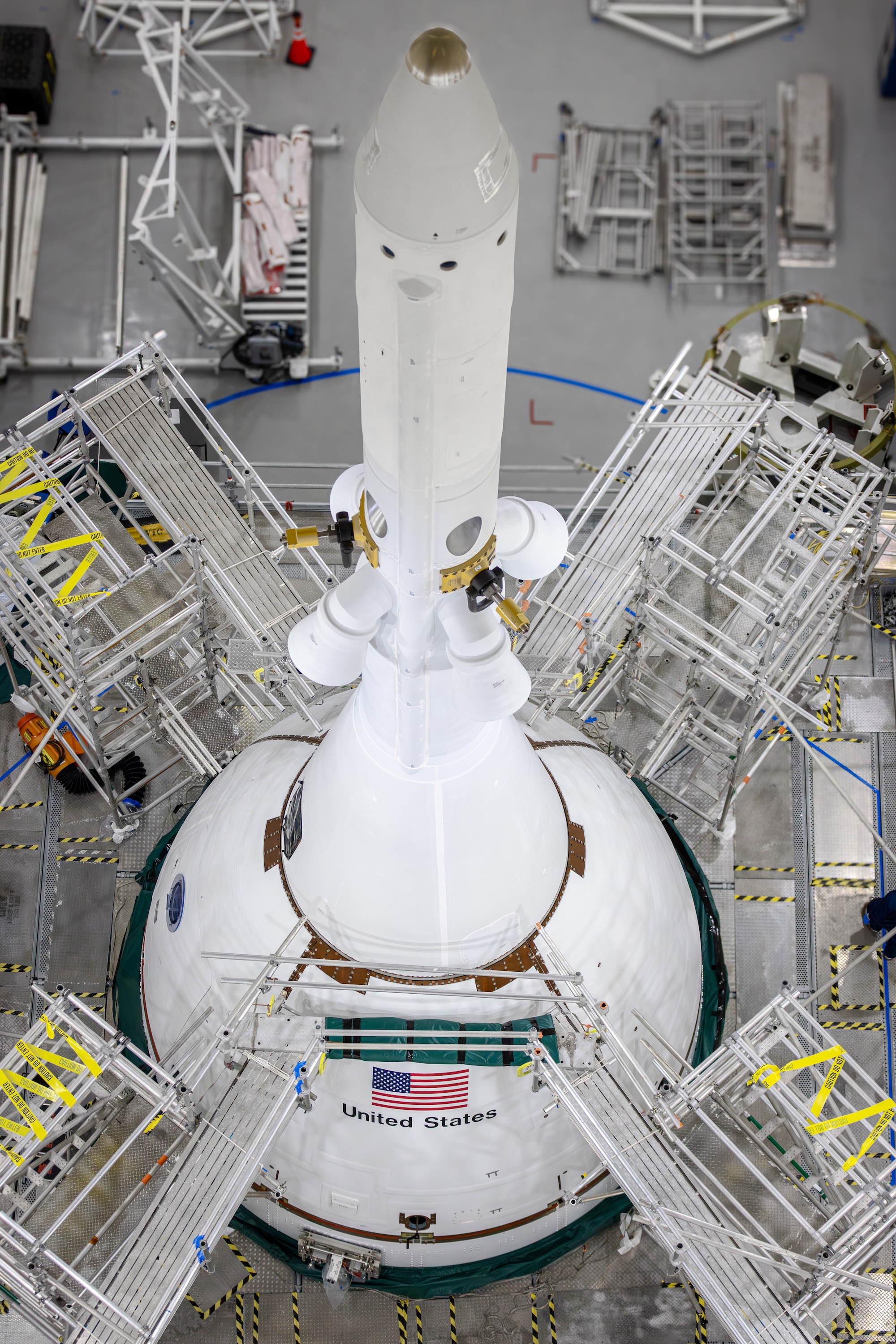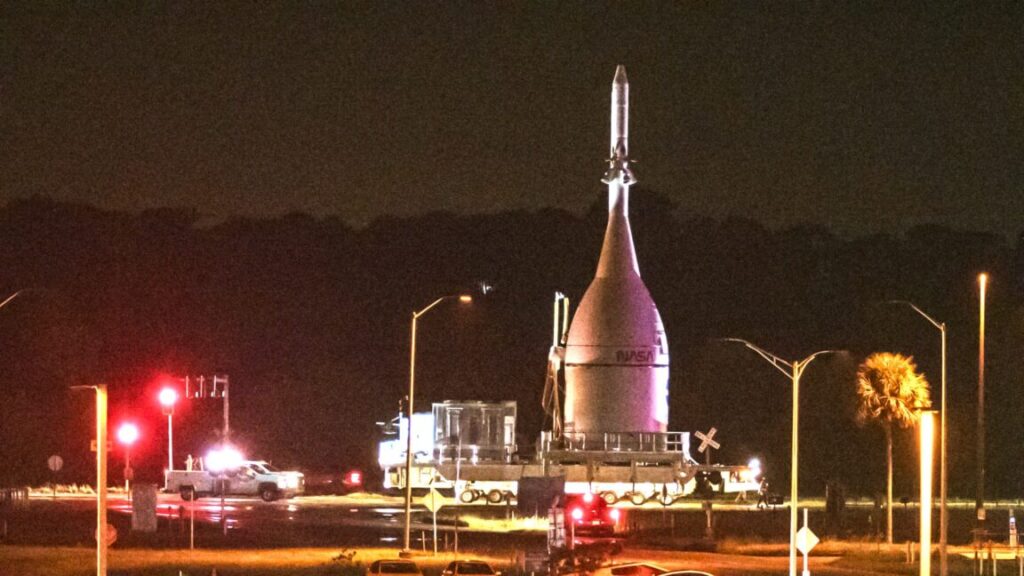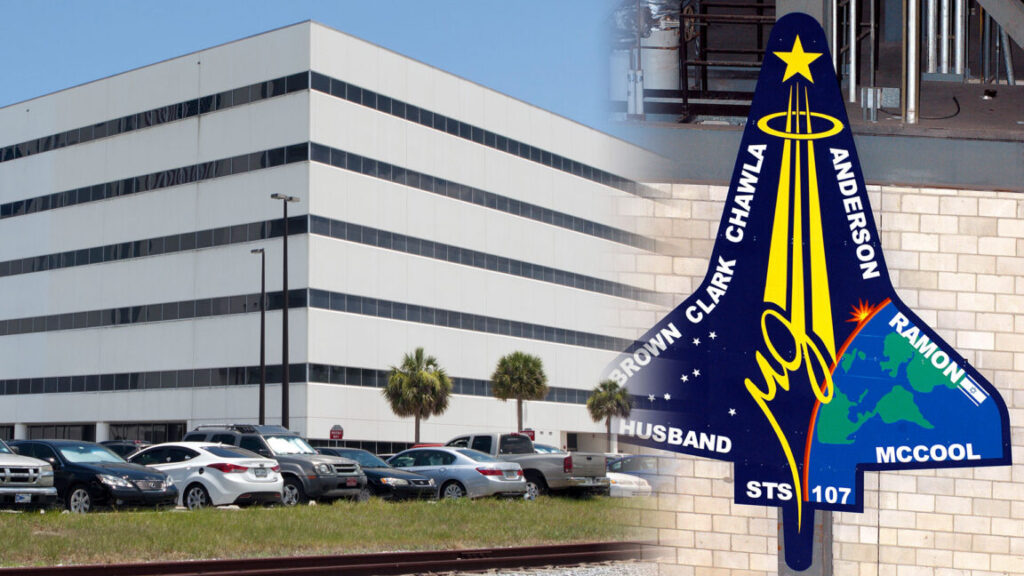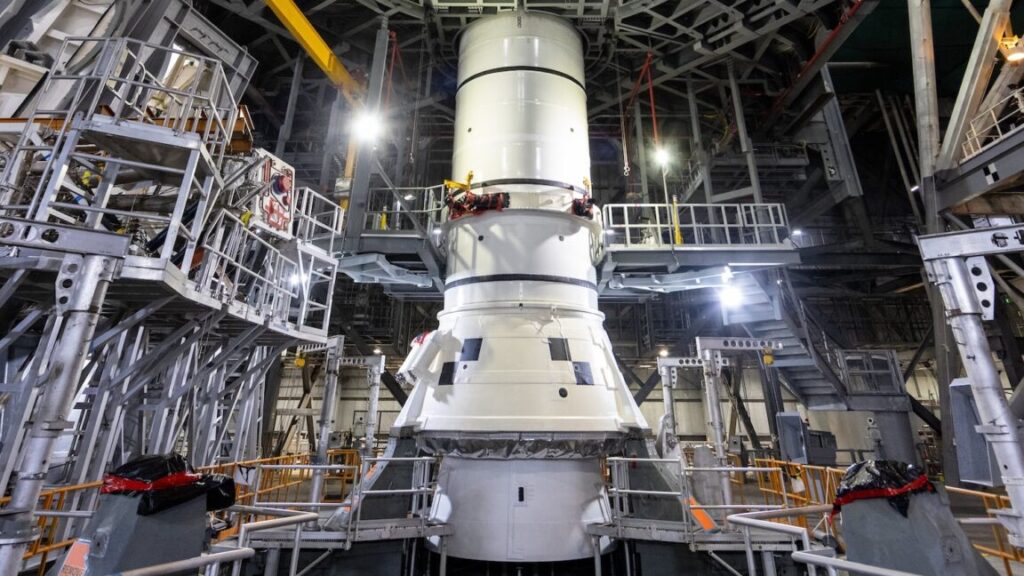NASA’s next Moonship reaches last stop before launch pad
The Orion spacecraft, which will fly four people around the Moon, arrived inside the cavernous Vehicle Assembly Building at NASA’s Kennedy Space Center in Florida late Thursday night, ready to be stacked on top of its rocket for launch early next year.
The late-night transfer covered about 6 miles (10 kilometers) from one facility to another at the Florida spaceport. NASA and its contractors are continuing preparations for the Artemis II mission after the White House approved the program as an exception to work through the ongoing government shutdown, which began on October 1.
The sustained work could set up Artemis II for a launch opportunity as soon as February 5 of next year. Astronauts Reid Wiseman, Victor Glover, Christina Koch, and Jeremy Hansen will be the first humans to fly on the Orion spacecraft, a vehicle that has been in development for nearly two decades. The Artemis II crew will make history on their 10-day flight by becoming the first people to travel to the vicinity of the Moon since 1972.
Where things stand
The Orion spacecraft, developed by Lockheed Martin, has made several stops at Kennedy over the last few months since leaving its factory in May.
First, the capsule moved to a fueling facility, where technicians filled it with hydrazine and nitrogen tetroxide propellants, which will feed Orion’s main engine and maneuvering thrusters on the flight to the Moon and back. In the same facility, teams loaded high-pressure helium and ammonia coolant into Orion propulsion and thermal control systems.
The next stop was a nearby building where the Launch Abort System was installed on the Orion spacecraft. The tower-like abort system would pull the capsule away from its rocket in the event of a launch failure. Orion stands roughly 67 feet (20 meters) tall with its service module, crew module, and abort tower integrated together.
Teams at Kennedy also installed four ogive panels to serve as an aerodynamic shield over the Orion crew capsule during the first few minutes of launch.

The Orion spacecraft, with its Launch Abort System and ogive panels installed, is seen last month inside the Launch Abort System Facility at Kennedy Space Center, Florida. Credit: NASA/Frank Michaux
It was then time to move Orion to the Vehicle Assembly Building (VAB), where a separate team has worked all year to stack the elements of NASA’s Space Launch System rocket. In the coming days, cranes will lift the spacecraft, weighing 78,000 pounds (35 metric tons), dozens of stories above the VAB’s center aisle, then up and over the transom into the building’s northeast high bay to be lowered atop the SLS heavy-lift rocket.
NASA’s next Moonship reaches last stop before launch pad Read More »


